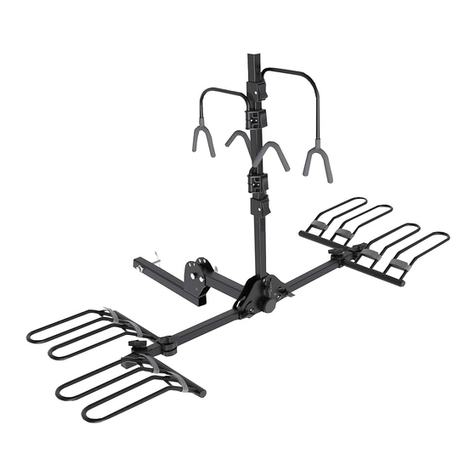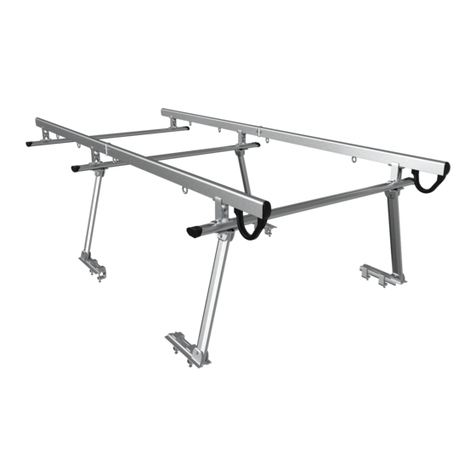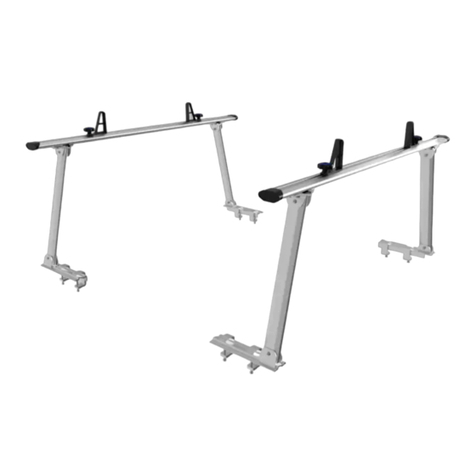
ENTHUZE.CA •PRODUCT & WARRANTY SUPPORT: 877.287.8634 •ENT60231-INS-RA •05/13/2020 •ECN7022 •PAGE 3
Step 1
Lower the exhaust by removing the three
rearmost rubber exhaust isolators from the
frame mounted hangers. Note: Support the
exhaust during installation to prevent damage.
See the 'Rubber Isolator Removal Diagram'.
This technique can be used if exhaust
hanger removal pliers are not available.
Using a 5/8" open end wrench, slide
the wrench up to the rubber isolator,
cradling the hanger rod as shown.
Place the flat edge of a pry bar between
the wrench and the hanger stop or hanger
rod. Then simply rotate the pry bar toward
the wrench to remove the rubber isolator.
Note: Using a lubricant or soapy
water on the hanger rod and the
rubber isolator helps removal.
REMOVAL DIAGRAM
Step 4
Fishwire (#4) a 1/2" carriage bolt (#1) and
square-hole spacer (#2) into the rearmost
hole in each frame rail, as shown, leaving the
fishwire attached. See 'Fishwire Technique'.
Insert coiled end of fishwire tool through hitch
mounting hole in vehicle frame rail and out the
access hole. Pass coiled end of fishwire
through spacer and thread bolt into
coil. Kink wire to keep spacer
seperate from bolt as shown.
Pull fishwire, spacer and
bolt through frame and
out mounting hole. Use
fishwire to guide hitch during mounting and
prevent loss of bolt or spacer inside frame rail.
MOUNTING
HOLE
ACCESS
HOLE
FISHWIRE TECHNIQUE
Step 2
Remove the muffler heat shield and trim
it to clear the mounting plate as shown.
Step 3
Remove the two rubber plugs in each frame
rail. Enlarge the forwardmost hole on each
frame rail to allow the provided 1/2" carriage
bolt (#1) and square-hole spacer (#2) to be
inserted into the frame rail.
See 'Hole Enlargement Diagram'.
ENLARGEMENT
1.125"REMOVE
Trim along bend line

























